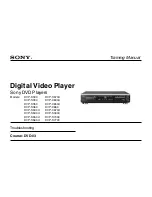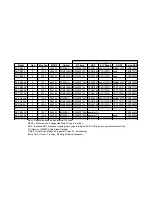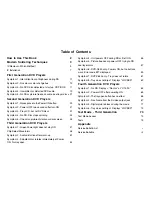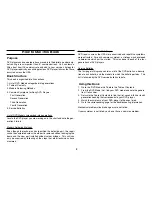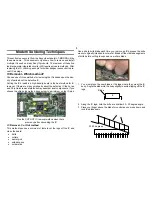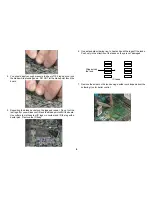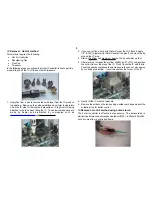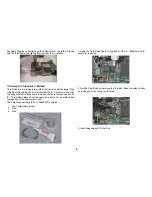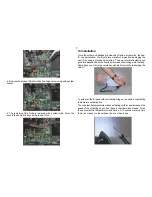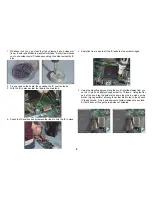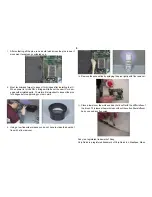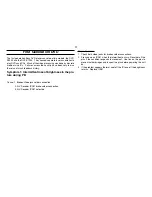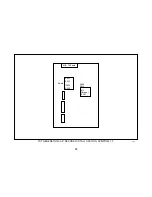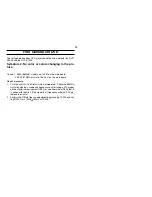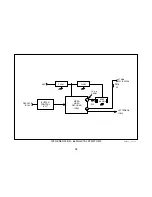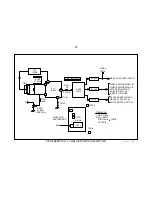
2
How to Use This Book
Purpose
DVD players and camcorders have moved into the digital age where sig-
nal routing is less important than IC communications. You can learn a
little about how ICs communicate and add to your service strategy for
DVD player repairs by examining previous DVD player failures that have
occurred across the USA.
Book Structure
This book is organized into five sections:
1. List of DVD Models categorized into generations
2. Table of Contents
3. Modern Soldering Methods
4. Common Symptoms for Sony DVD Players:
First Generation
Second Generation
Third Generation
Fourth Generation
5. Service Bulletins
List of DVD Models categorized into generations
Locate the DVD player you are working on in the chart and note the gen-
eration it falls in.
Modern Soldering Methods
Even though the technician has identified the defective part, the repair
cannot be completed unless the old part is removed without damaging the
board and the new part installed without solder bridges. This skill can
only be acquired by following all the steps that other technicians have
mastered.
Common Symptoms for DVD Players
DVD repairs across the USA were examined and repetitive symptoms
were extracted. For each common symptom, a strategy was developed
to determine which part has failed. This was done to each of the four
generations of DVD players.
Service Bulletins
The first page in this group contains a list of the DVD bulletins, a descrip-
tion of each bulletin, and the models to which the bulletin pertains. This
list is followed by the DVD service bulletins to date.
Using this Book
1. Go to the “DVD Model List” before the Table of Contents.
2. From the DVD Model List, find your DVD model and note the genera-
tion it falls under.
3. Return to the Table of Contents to find the first, second, third or fourth
generation heading that corresponds to your DVD player.
4. Match the symptoms of your DVD player to the ones listed.
5. Go to the corresponding page for the troubleshooting information.
Mechanical problems like broken gears are not listed.
If your symptom is not listed, you do not have a common problem.
Summary of Contents for DVP-S300
Page 4: ...1 NOTES ...
Page 13: ...10 NOTES ...
Page 19: ...16 NOTES ...
Page 25: ...22 NOTES ...
Page 29: ...26 NOTES ...
Page 35: ...32 2ND GENERATION OPTICAL ASSEMBLY SYMPTOM 3 1 3 01 19DVD03 ...
Page 39: ...36 NOTES ...
Page 61: ...58 Flex Cable DVP C650 ...
Page 71: ...68 NOTES ...
Page 76: ...APPENDIX ...

